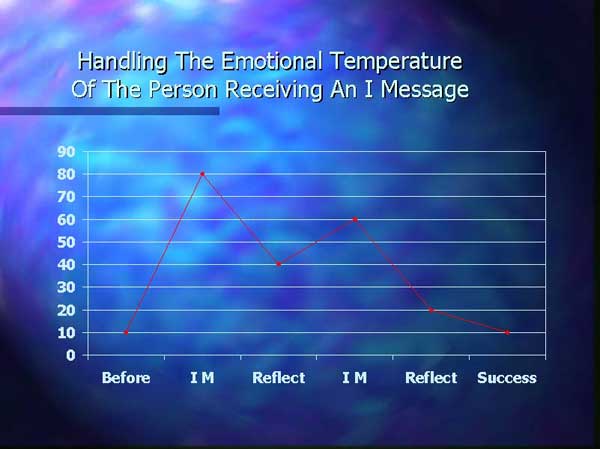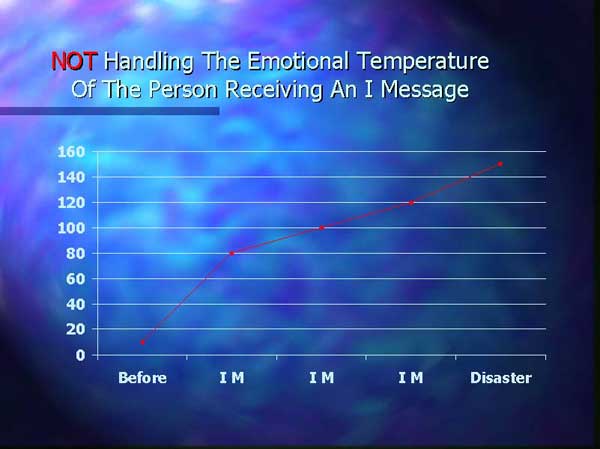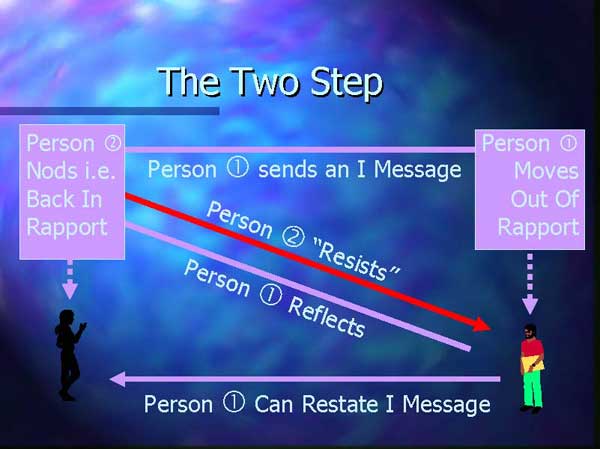WordPress database error: [Table 'adding_b51201.wp_SBConfiguration' doesn't exist]select * from wp_SBConfiguration where id='1'
Welcome to Module 6.1 Return to Dashboard
I’d love to tell you that when you send your I message everything will immediately be solved. Sometimes that will happen. But more often, there’s a little more you’ll want to do. Think of a situation when someone else has told you they had a problem with what you did. What did you do in response? What facial expression did you have, what did you say, what body movements did you make?
Notice that these responses are mainly indications that you own a problem. So at the start the other person owned a problem. And then they told you about it. And now you own a problem with what they said. It’s not totally comfortable. The same thing happens when you send your I message to someone else, even when its an I message. They may own a problem. They feel out of rapport. It’s as if their emotional temperature suddenly shoots up. And when someone’s emotional temperature is raised, they don’t listen so well. If you want them to co-operate with your I message, it makes sense to find out how to lower their distress level.
So what do you do when someone else owns a problem? That’s right, you get in rapport and reflectively listen to them. Now, when you do that, their emotional temperature will drop again, and when it does, that means they are more able to hear your problem. Once that happens, you can send the I message again. And this time, since they’ve heard it before, it’s likely to be less stressful. Besides, they know you understand their side of it. On a graph, it looks like this:

( Please note: IM in the diagram above means I message )
Interestingly, what many people are tempted to do is to think to themselves “This person is frowning; they’re arguing back; they’re laughing nervously…. They’re resisting me! Those are more things I don’t like. Hey, I know! I’ll send another I message.” Here’s how that works:

In such situations, you’ll almost certainly lose the point of at least one of the I messages. Trust me, if you want this to work, it’s worth reflective listening. The aim of this is to get the person to change; not to prove you can I message someone into a frenzy! Solve one problem at a time.
So if the other person argues back, I restate their argument. If they shrug their shoulders, I say “You don’t see what I’m on about?” or whatever I imagine the shrug means. If a little child covers their ears and closes their eyes in response to my I message, I say “You don’t want to hear this, is that right?”
Next is a video on how you can get your I message across and still maintain rapport with the other person easily…..OR CAN YOU…?
And here is a diagramatic explanation of how you use the two step….
